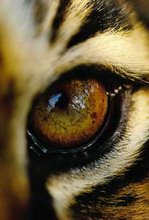There was more that happened in the last few days but there was never time to write in the rush of leaving. One of the best parts of the whole two months was the trip to
Due to most of us failing to keep our feet dry, our hiking boots were piled up in a wall above the newly built fire to fry them. Cooking began as things were unpacked, as did drinking. Unlike the rest of them I am unable to develop any sort of fondess for beer – but the guys had thoughtfully brought along some yummy vodka and orange. I generally blame Franco for giving me more of it than I might otherwise have consumed, all before the lentil dinner was ready. I then spent some time ranting at Franco in very bad Spanish about how beautiful the stars were. And they were – ours were the only lights for miles around – we were in the middle of the ocean with the entire milky way spread out above us! Libby and Richard went off to play with some very expensive night-vision binoculars (for the nocturnal shearwaters that occasionally flew over head making creepy noises) and I waved my socks in front of the dying fire.
When it got late and people were starting to bagsy bunks in the house (apart from the guys who kept getting up to shine a torch at the boat far below and worry about how much water it was taking in) I left my hiking boots on the edge of the now gently glowing cinders and crawled into my sleeping bag and onto a plastic foam mattress. Some time later someone helpfully decided to put more wood on the fire. Going outside
By bashing the deformed plastic I was able to squeeze my foot inside and hobble back to the boat. And then all the way back up the hill once we got back to town. The next day’s trip to Rabenaal required the borrowing of Franco’s rather large boots and wearing almost all the pairs of socks I owned. It was just lucky that the great boot melting only occurred near the end of my trip, since shoe shops are not abundant on Robinson Crusoe. On the morning I left I dropped the boots into the large metal bin on the side of the street.
Almost two months after arriving I one again climbed aboard the small plane and headed for the mainland along with
The end of the story for anyone who hasn’t noticed my sudden reappearance is that I’m back in
I’d now rant about how wonderful my friends are but I don’t want to make them big-headed. So maybe I shall occasionally keep you updated about my life, or give you some interesting things I have written, but I make no promises. All adventures from now on are likely to be of the more mundane variety.
